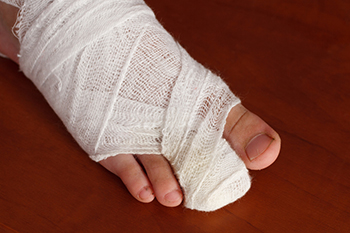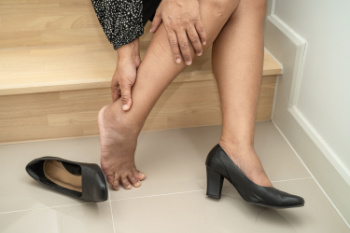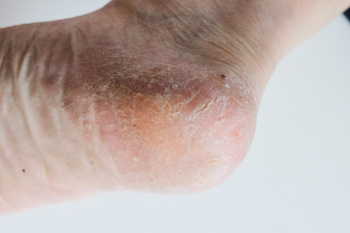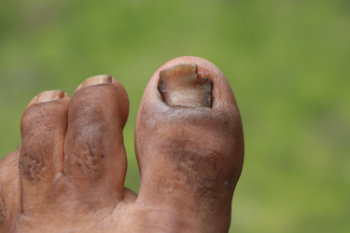
Buddy taping is a common method used to treat a broken toe, where the injured toe is taped to its neighboring toe for support and stabilization. This technique helps keep the broken toe in position while it heals. The process involves gently aligning the broken toe with the adjacent toe and using medical tape or adhesive strips to bind the two together. The tape should be applied in a way that provides enough support without causing excessive pressure or restricting blood flow. It is important to leave enough space between the toes to avoid discomfort or skin irritation. Buddy taping can help prevent further injury by limiting movement, but it is essential to seek medical advice from a chiropodist to ensure it is done correctly and to determine if additional treatment is necessary for proper healing. If you have broken your toe, it is suggested that you contact this type of healthcare professional who can guide you toward proper healing techniques.
A broken toe typically occurs following either a sudden, traumatic injury, like dropping a heavy piece of furniture on the toe. The impact causes the bone to fracture and produces a variety of painful symptoms. If you suspect that you’ve broken your toe, please consult with one of the specialists from Thornhill Foot Clinic. Our chiropodists can help you maintain the health of your lower limbs and your mobility.
Symptoms
Throbbing pain
Swelling
Bruising
Cracking sound at the time of injury
Difficulty bearing weight on the toe
Difficulty walking
Toe resting at an unnatural angle
Diagnosis
Your chiropodist can diagnose a broken toe through physical examination and imaging studies, such as X-rays.
Treatment
The main goals of treatment are to ensure that the bone heals properly, as a toe fracture that doesn’t heal properly can lead to osteoarthritis. You will typically need to rest the affected toe. You may be prescribed a splint to immobilize the toe while it heals. Icing the affected toe and taking over-the-counter medications can help reduce pain. In cases of severe fractures, surgery may be necessary to reset the broken bones and make sure that they heal correctly.
If you have any questions, please feel free to contact our office located in . We offer the newest diagnostic and treatment technologies for all your foot care needs.




